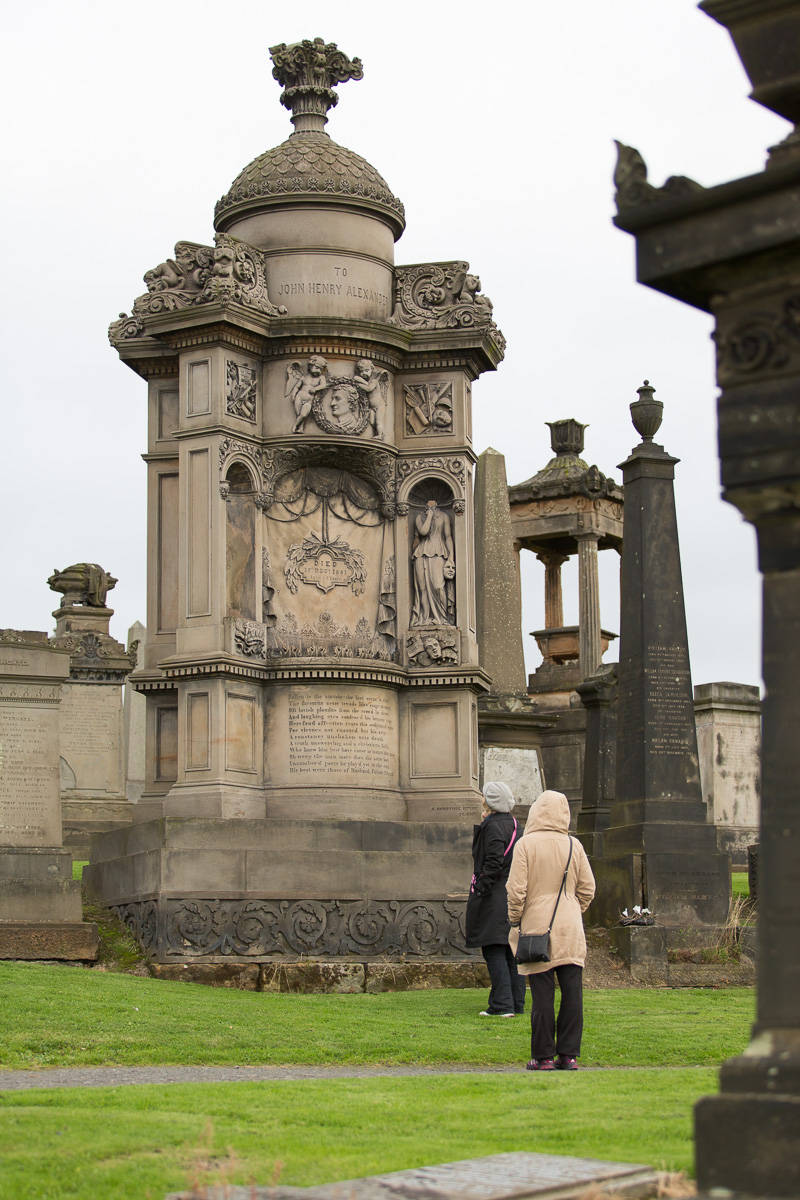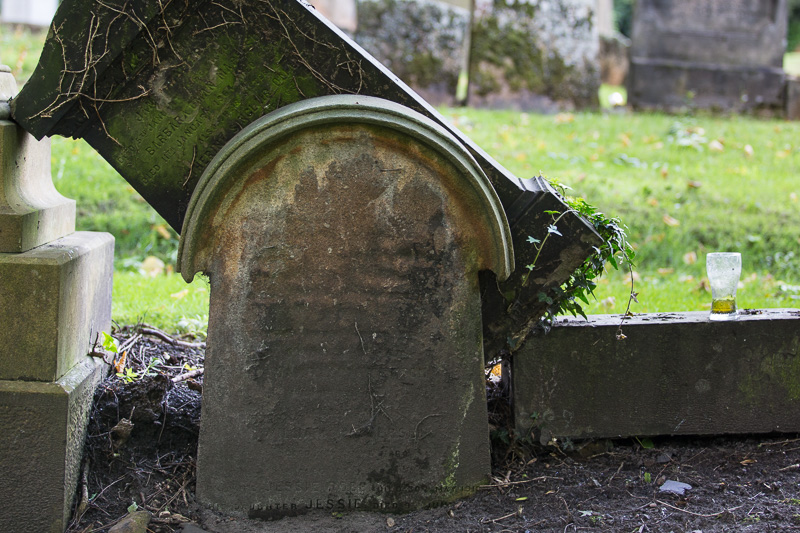A couple weeks ago, as part of Glasgow’s Doors Open Day, volunteers offered tours of the Necropolis. Located behind Glasgow Cathedral, the Necropolis is a crumbling celebration of Victorian Glasgow’s elite. Glasgow thrived as the Empire’s “second city” the same way its first city did, by exploiting those it colonized. Ironic, then, that the cemetery is crumbling, in part, because scrap metal dealers and more marginal entrepreneurs have “colonized” it, stealing plaques and other ornamental bits from the 3,000 or so monuments scattered across its 37 acres. But not all the dead were industrialists and colonizers. John Henry Alexander, for example, was an actor. He owned and managed the Theatre Royal in Dunlop Street which was Glasgow’s preeminent venue until 1849 when someone shouted “Fire” during a performance and 61 people were trampled to death despite Alexander’s efforts to assure the audience that there was not, in fact, a fire. Accounts imply that the tragedy was responsible for his death a short time later. No doubt he languished. No doubt he was wracked with guilt.

I was struck by the epitaph, twelve lines in rhyming couplets:
Fallen is the curtain – the last scene is o’er.
The favourite actor treads life’s stage no more.
Oft lavish plaudits from the crowd he drew
And laughing eyes confess’d his humour true.
Here fond affection rears this sculptured stone
For virtues not enacted but his own –
A constancy unshaken unto death.
A truth unswerving and a christian’s faith.
Who knew him best have cause to mourn him most.
Oh weep the man more than the actor lost.
Unnumber’d parts he played yet to the end
His best were those of Husband Father Friend.
It epitomizes the Victorian aesthetic which is busting out everywhere in the Necropolis. I can see it most obviously in the sculptures. The artists drew on Classical and Ancient Egyptian themes but couldn’t resist churning them through a sentimental blender. While Alexander’s monument presents the classical poles of Comedy and Tragedy, like most of the monuments, it leans hard to the tragic side of things. From a 21st century point of view, the Victorian notion of tragedy is mixed with a treacly goo that magically turns it comic. Where Victorians might have read events – like a theatre trampling – “straight”, we tend to read them with an eye for the absurd or, if we’re Canadian, for the ironic. Maybe that explains why I found myself quietly laughing through most of the tour. Inappropriate, I guess. But absolutely appropriate, too.
The poetry reinforces what I observe in the sculpture. It’s tragedy with syrup. It’s funny. It’s bad. Who would want to commit this saccharine to stone?
Even so, I wonder if I might be committing hubris. Yes, I know it’s ironic that I’m drawing on a Classical term here. In retrospect, we can see that the Victorian sensibility was more cultural fad than durable ideal. The same will probably be true of my aesthetic of absurdity, irony and unreason. So maybe I’m committing hubris when I laugh in a Victorian cemetery while applying standards that will be just as laughable a hundred and fifty years from now when people walk past my pomo headstone with its disco ball and 10,000 word David Foster Wallace quote engraved in really tiny letters.

